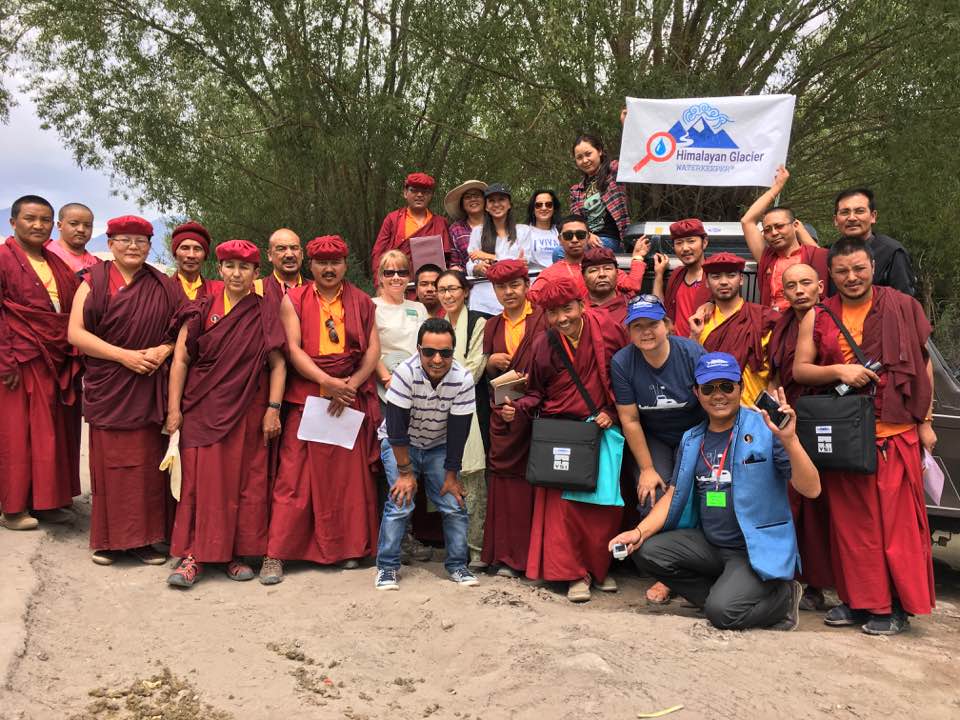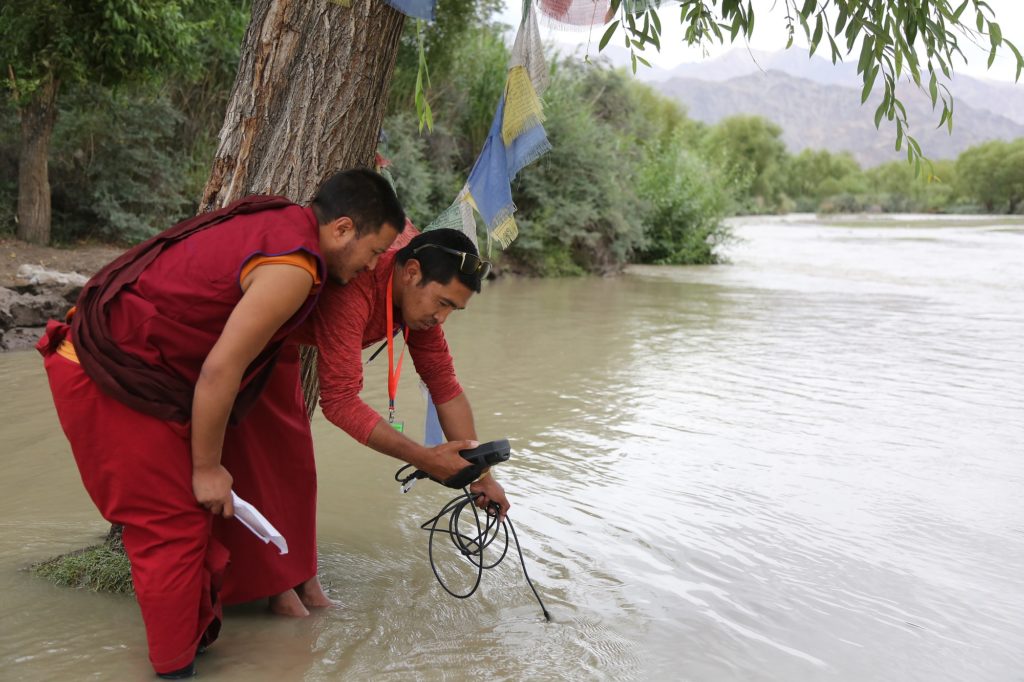Waterkeepers Ascend the Himalayas to Help Locals Raise Water Quality
By: Waterkeeper Alliance
Last July, International Director Sharon Khan and two experts on water-quality monitoring – Milwaukee Riverkeeper Cheryl Nenn and former Waccamaw Riverkeeper Christine Ellis – travelled to the Ladakh region in the Indian Himalayas to train a growing network of Waterkeepers there. The trip was part of Waterkeeper Alliance’s Himalayan Water Project, the alliance’s effort, in partnership with Live to Love International and Himalayan Glacier Waterkeeper, to protect Himalayan glaciers and rivers from pollution and climate change.

The team saw firsthand the devastating effects of climate change. Everywhere in Ladakh, rivers and streams are running dry. In some instances, developments are being built directly on top of them. More volatile weather systems, such as cloudbursts that create powerful floods, have devastated communities, taking lives and livelihoods. Increased tourism has brought rapid development in Leh, the capital city of Ladakh, in spite of decreasing water supplies as glaciers retreat. Adding to the threat of decreasing water supplies, many of the region’s streams are seriously polluted. In the face of all this, the alliance’s goal is to provide a growing network of Waterkeepers with the tools and training to monitor the quality of these streams and protect their precious water resources.
The inaugural event was held July 20th at the Druk Padma Karpo School. Present were Himalayan Glacier Waterkeeper Padma Tashi, His Eminence Thuksey Rinpoche, one of two spiritual heirs to His Holiness the Gyalwang Drukpa, leader of the Drukpa lineage of Buddhism and founder of the Waterkeeper network in Ladakh, and Dr. Sonam Dawa Lonpo, chief executive of the Ladakh Autonomous Hill Development Council. Also attending were the leaders of Himalayan Glacier Waterkeeper’s 20 affiliates, all of them Drukpa monks who are dedicated to protecting the well-being of their communities, and many Drukpa nuns, students and area residents.
When they first arrived, Sharon, Cheryl, and Christine witnessed locals washing trucks, cars and carpets on a tributary of the Indus River, alongside signs warning that this was illegal. Severe algal blooms in the stream were evidence of the pollution caused by these activities. But the day after the launch event, there were no violations in sight, because access to the tributary had been blocked. His Eminence Thuksey Rinpoche had asked the chief executive councilor to intercede. The entrances to the stream were bulldozed, and concrete barriers were put in place. This has been one small victory in a larger campaign to help the people of Ladakh understand the connection between their waterways and their health.
“The training exercises extended over five days,” Sharon Khan said, “during which we trained Himalayan Glacier Waterkeeper and its 20 affiliates, along with the Drukpa monks and nuns and students at the Druk Padma Karpo School.” They trained the teams on the use of water-quality monitoring equipment from YSI and EarthEcho. “By the end of our tour,” Khan said, “we had driven over 500 kilometers through some of the world’s most spectacular mountainous terrain to test water quality at 10 sites northwest and southeast of Leh.” They found the water quality of glacial streams to be generally good – slightly alkaline, but having low conductivity, high clarity, no excessive nutrients and dissolved oxygen at levels supportive of aquatic life. For the larger river systems of the Indus and the Zanskar Rivers, the main difference was low clarity and highly turbid water resulting from excessive suspended sediments.

With their new tools, Himalayan Glacier Waterkeeper’s community is able to establish and monitor baseline physical and chemical water quality of their local waterways and advocate for the protection of clean water. Continuing testing will help to establish baseline characteristics of these waterways and allow Waterkeepers to assess and address any harm caused by pollution or climate change.
In mid-September Sharon Khan returned to Ladakh with Waterkeeper Alliance President Robert F. Kennedy, Jr., and Executive Director Marc Yaggi to join in the celebration of the 1000th anniversary of the birth of Naropa, the sainted founder of the Drukpa lineage. Before hundreds of thousands of people, they expressed the urgency of protecting Himalayan glaciers and rivers – which are the sources of water for at least half the world’s population – from pollution and climate change.